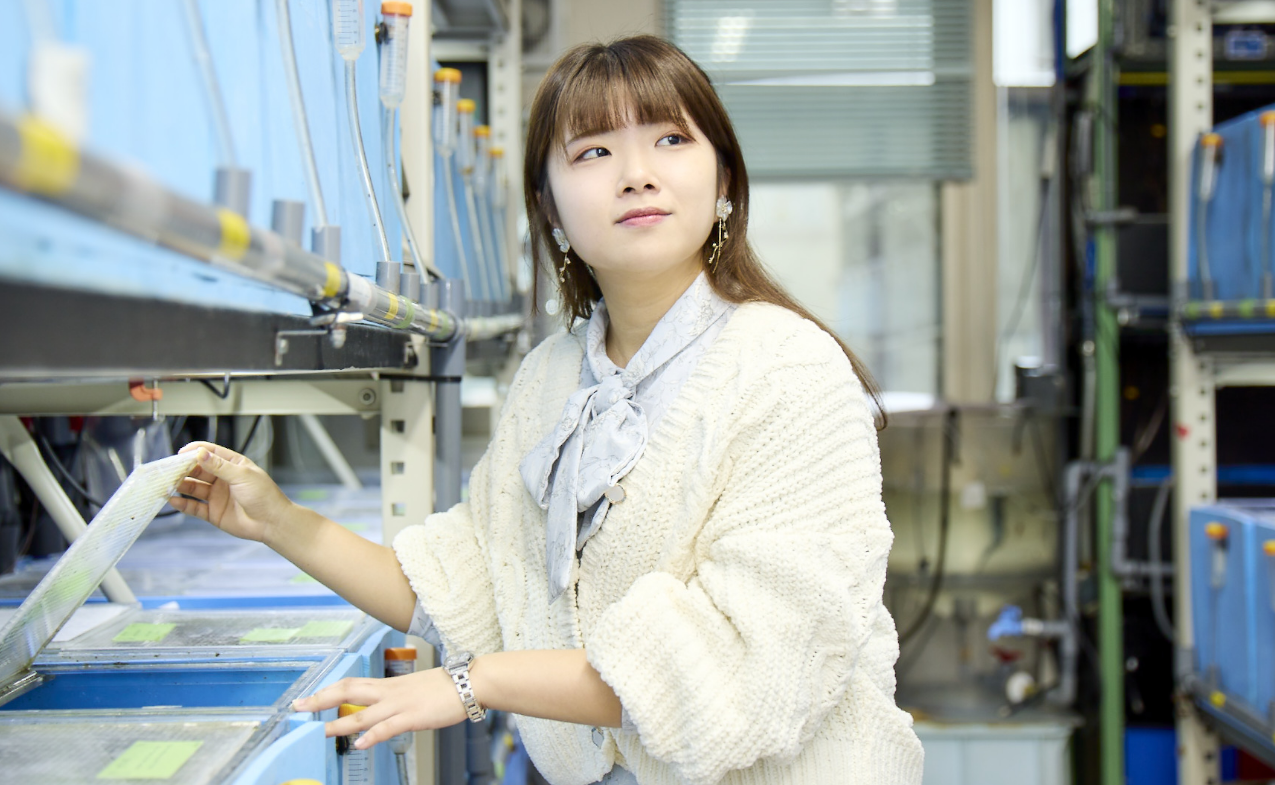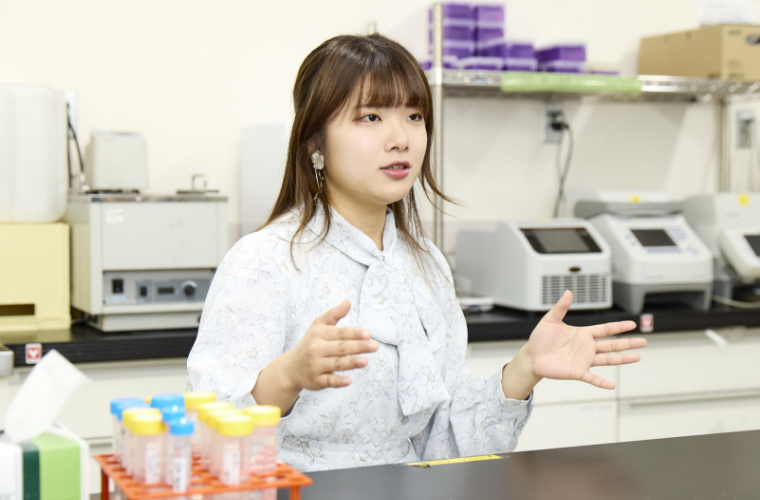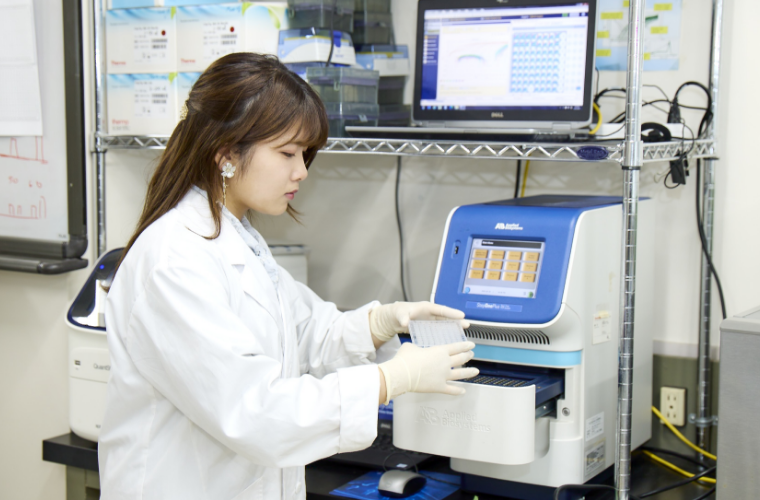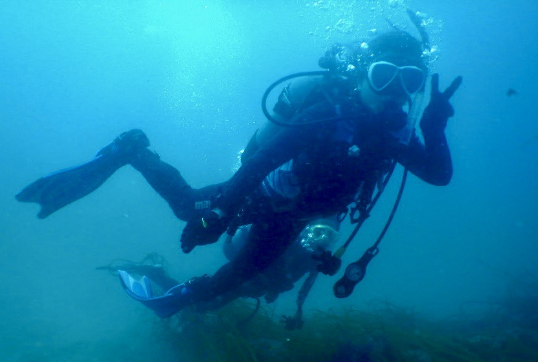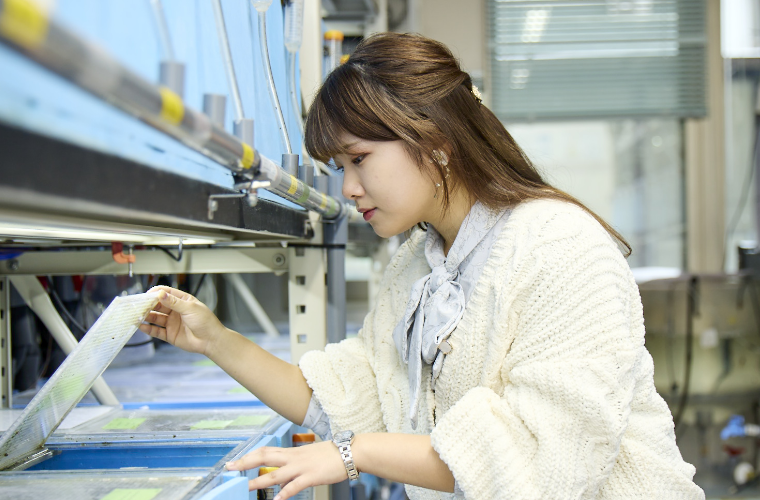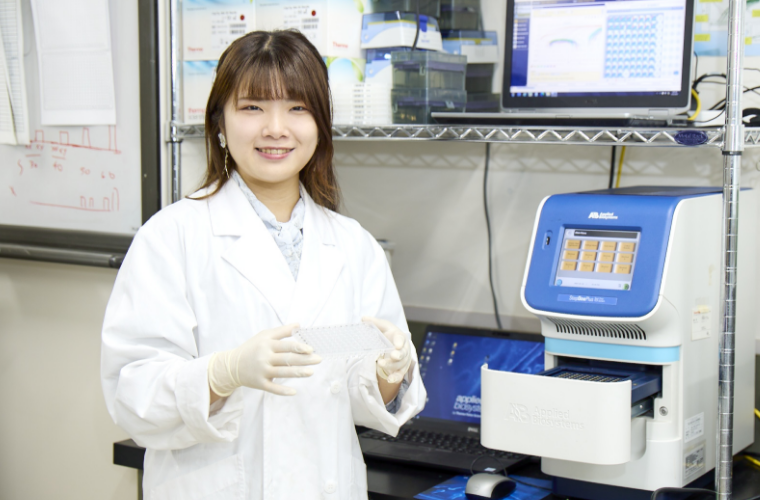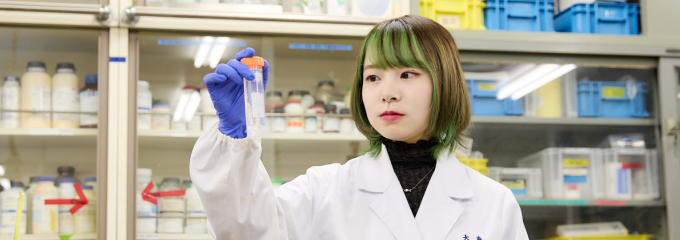I also enjoy watching fish in the sea on my days off.
Also practicing scuba diving
Last year, I obtained my scuba diving license as part of my studies. In the past, I often observed living creatures from above the sea, but my world changed completely when I experienced the underwater world from the same perspective as the fish. Currently, I often dive into the sea in Tateyama, where our university's research facility is located, to investigate the golden sardine, which is my research subject, but I also dive into oceans around the world that I don't know about yet, and see beautiful marine life that I have never seen before. I am training every day to improve my skills with the goal of meeting new people.





